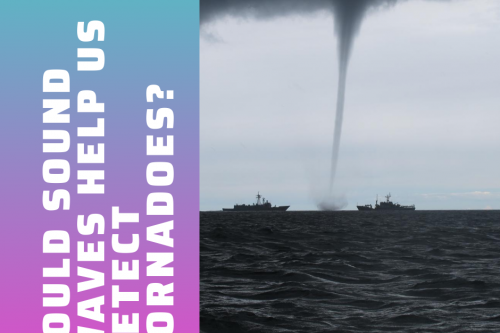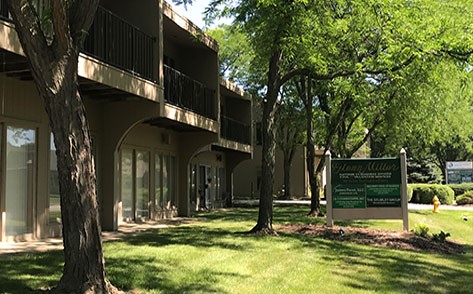Sound technology can help us detect tornadoes sooner
Reading Time:
3 minutes, 1 second
Sound technology can help us detect tornadoes sooner
Jumping Trout, LLC

(CNET, August 2020) In light of yesterday's storms, I decided to do some research on tornadoes, their warning signs, and how much time you actually have. Yesterday in Rockford, we were hit by a series of sever thundertorms and tornado warnings. There was plenty of damage to trees and some properties in the surrounding areas. I was working from home when I saw it get dark outside and realized the sirens were going off. I turned on the news to watch the weather and saw that there were tornado warnings in the area. After talking with some family members, they said their phones gave them an alert, mine never did. By the time the sirens went off, it was already pretty bad out there. Which got me thinking, is there a better way to alert people?
There are about 1,200 tornadoes in the US every year (according to the National Sever Stomes Laboratory), making them violent parts of the Midwest and Southeast. Tornadoes were responsible for about $3.1 billion in economic damage in 2019 across the country, and kill about 70 people every year. They can form in less than 15 minutes, and most alarms only tell you AFTER a tornado has been spotted.
While our weather men and women work tirelessly to get us updated information during bad weather, tornado forcasting still relies on interpreting the radar and getting eye witness accounts. These minutes that it takes to detect and alert about a tornado could mean life and death for those in the storm's path.
There are ways to detect a tornado earlier, using older technology in newer ways. Scientists are hoping to build a better warning system by listening for low-frequency sounds a tornado makes right before it forms. These sounds are below the range of human hearing and could be able to detect the presence of a tornado 50 miles away.
Even though tornadoes are loud (most people account for a close tornado sounding like a freight train), there could be warning sounds that we can detect.Waxler, a professor in the department of physics and astronomy at the University of Mississippi specializing in acoustics, studies how sound travels through the atmosphere. Him and his boss, Henry Bass, have studied the development of microphones to detect infrasound. Infrasound is sound below the frequency of 20 Hz, which is the lowest frequency that humans can typically hear. In 2011, Waxler sent a team to Oklahoma to capture data using these microhpones, they recorded sound in the infrasonic range - confirming the theory.
This isn't a new discovery though - Bedars, a research scientist at the National Oceanic and Atmospheric Administration has been working in this area for decades. This same technology has been used to detect illegal nuclear weapons tests in the 1970s, picking up shockwaves from the aurora borealis, and detecting meteor explosions.
Using this technology for early tornado detection was implemented and tested in Kansas and Colorado. The warning time was about 30 minutes ealier than what the radar could detect. This is a huge time difference for saving lives.
Unfortunately, other researchers weren't convinced and funding eventually dried up. While this technology can help detect tornadoes, the real question is determining what super cell thunderstorms might produce a tornado. It seems random, and is impossible to predict - radar helps tell us air circulation is favorable for tornadoes, but that doesn't mean one will form.
Mother Nature is awesome, and our understanding of it is always evolving. As we learn more, the technologies will catch up eventually. Until then, be alert and stay safe out there.
Source: https://www.cnet.com/features/building-a-better-tornado-warning-system-when-minutes-count/
There are about 1,200 tornadoes in the US every year (according to the National Sever Stomes Laboratory), making them violent parts of the Midwest and Southeast. Tornadoes were responsible for about $3.1 billion in economic damage in 2019 across the country, and kill about 70 people every year. They can form in less than 15 minutes, and most alarms only tell you AFTER a tornado has been spotted.
While our weather men and women work tirelessly to get us updated information during bad weather, tornado forcasting still relies on interpreting the radar and getting eye witness accounts. These minutes that it takes to detect and alert about a tornado could mean life and death for those in the storm's path.
There are ways to detect a tornado earlier, using older technology in newer ways. Scientists are hoping to build a better warning system by listening for low-frequency sounds a tornado makes right before it forms. These sounds are below the range of human hearing and could be able to detect the presence of a tornado 50 miles away.
Even though tornadoes are loud (most people account for a close tornado sounding like a freight train), there could be warning sounds that we can detect.Waxler, a professor in the department of physics and astronomy at the University of Mississippi specializing in acoustics, studies how sound travels through the atmosphere. Him and his boss, Henry Bass, have studied the development of microphones to detect infrasound. Infrasound is sound below the frequency of 20 Hz, which is the lowest frequency that humans can typically hear. In 2011, Waxler sent a team to Oklahoma to capture data using these microhpones, they recorded sound in the infrasonic range - confirming the theory.
This isn't a new discovery though - Bedars, a research scientist at the National Oceanic and Atmospheric Administration has been working in this area for decades. This same technology has been used to detect illegal nuclear weapons tests in the 1970s, picking up shockwaves from the aurora borealis, and detecting meteor explosions.
Using this technology for early tornado detection was implemented and tested in Kansas and Colorado. The warning time was about 30 minutes ealier than what the radar could detect. This is a huge time difference for saving lives.
Unfortunately, other researchers weren't convinced and funding eventually dried up. While this technology can help detect tornadoes, the real question is determining what super cell thunderstorms might produce a tornado. It seems random, and is impossible to predict - radar helps tell us air circulation is favorable for tornadoes, but that doesn't mean one will form.
Mother Nature is awesome, and our understanding of it is always evolving. As we learn more, the technologies will catch up eventually. Until then, be alert and stay safe out there.
Source: https://www.cnet.com/features/building-a-better-tornado-warning-system-when-minutes-count/
Posted In:

